I have to write a code that generates a pascal's triangle with 12 rows.
I've written everything on my own except one part, That's the formula we use to generate numbers. And the problem is I don't understand what's the connection between our counters and generated numbers (since we're using our counters.).
#include <iostream>
#include <string>
using namespace std;
int main() {
const int rows=12;
int padding, value, fxValue;
for(int rowCounter=0; rowCounter<rows; rowCounter++)
{
fxValue=1;
cout << string((rows-rowCounter)*6, ' ');
for(int fxCounter=0; fxCounter<=rowCounter; fxCounter++)
{
value=fxValue;
fxValue = fxValue*(rowCounter-fxCounter)/(fxCounter+1);
// cout << "fxCounter: "<< fxCounter << endl
// << "rowCounter: " << rowCounter << endl
// << "fxCounter: " << fxCounter << endl
// << "fxValue: " << fxValue << endl;
padding=fxValue/10;
if(padding==0) cout << value << string(11, ' ');
else if(10>padding) cout << value << string(10, ' ');
else if(padding>10) cout << value << string(9, ' ');
}
cout << endl;
}
return 0;
}
Here's the problem:
fxValue = fxValue*(rowCounter-fxCounter)/(fxCounter+1);
Can someone please explain how did the author came up with the idea of using these variables and how it works fine?

